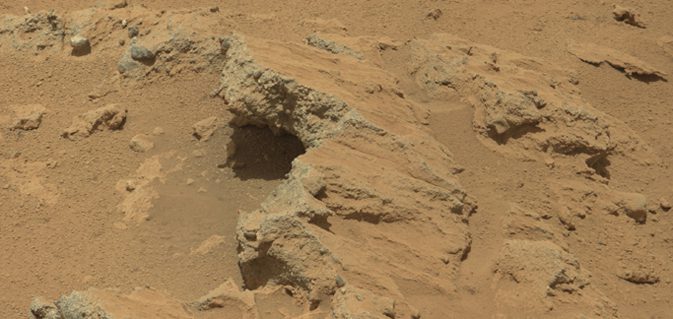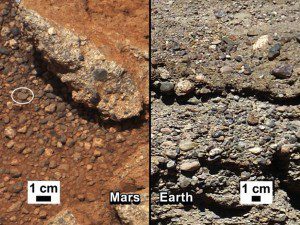Trump Tariffs on Russia’s Oil Buyers Bring Economic, Political Risks
From punishing Brazil to trying to curb imports of fentanyl, U.S. President Donald Trump has wielded the threat of tariffs as an all-purpose foreign policy weapon.

Image credit: NASA/JPL-Caltech/MSSS
Is this photo proof that Mars once had an intertwined inland waterway system?
NASA scientists say that photos taken recently by the Curiosity Rover reveal diffinitive evidence that a river once flowed vigorously across the surface of Mars.
NASA says that the rock outcrop shown above, hereby named “Hottah” after Hottah Lake in Northwest Canada, show ancient streambed gravel and rocks that are too big to have been carried any other way than by water. The rounded shape of some stones indicate long-distance transport from an above rim, where a channel named Peace Vallis is fed by an area known a the “alluvial fan” above.

“From the size of gravels it carried, we can interpret the water was moving about 3 feet per second, with a depth somewhere between ankle and hip deep,” said Curiosity science co-investigator William Dietrich of the University of California, Berkeley.
The Mars Curiosity Rover stumbled upon the riverbed while exploring between the north rim of Gale Crater and the base of Mount Sharp, a mountain inside the crater where Curiosity landed.
The stream was no flash flood either. Scientists say the evidence shows that the stream was part of a bigger system that flowed continuously for long periods of time.
So does this mean that a long, long time ago in a planet relatively not far way have Martian Mariners moving cargo up and down stream? Probably not, but it’s possible.
“A long-flowing stream can be a habitable environment,” said Mars Science Laboratory Project Scientist John Grotzinger of the California Institute of Technology in Pasadena. “It is not our top choice as an environment for preservation of organics, though. We’re still going to Mount Sharp, but this is insurance that we have already found our first potentially habitable environment.”

Sign up for gCaptain’s newsletter and never miss an update

Subscribe to gCaptain Daily and stay informed with the latest global maritime and offshore news
Essential news coupled with the finest maritime content sourced from across the globe.
Sign Up